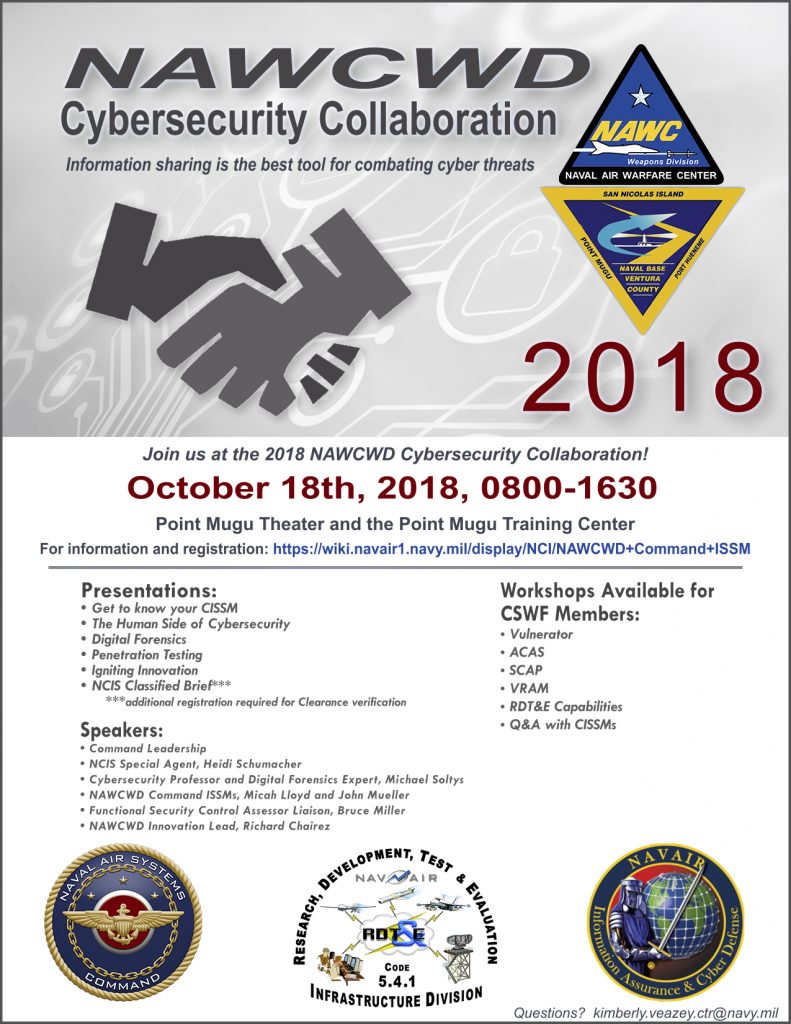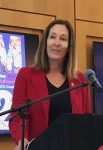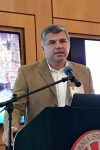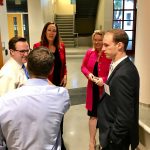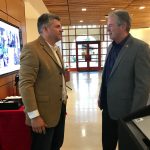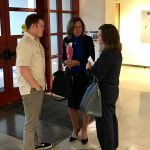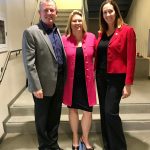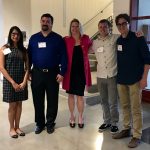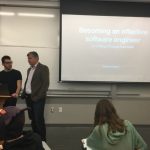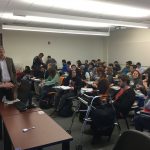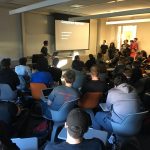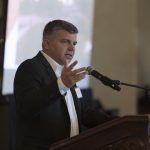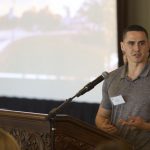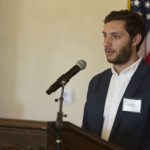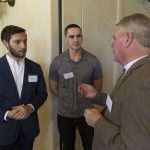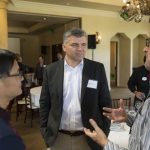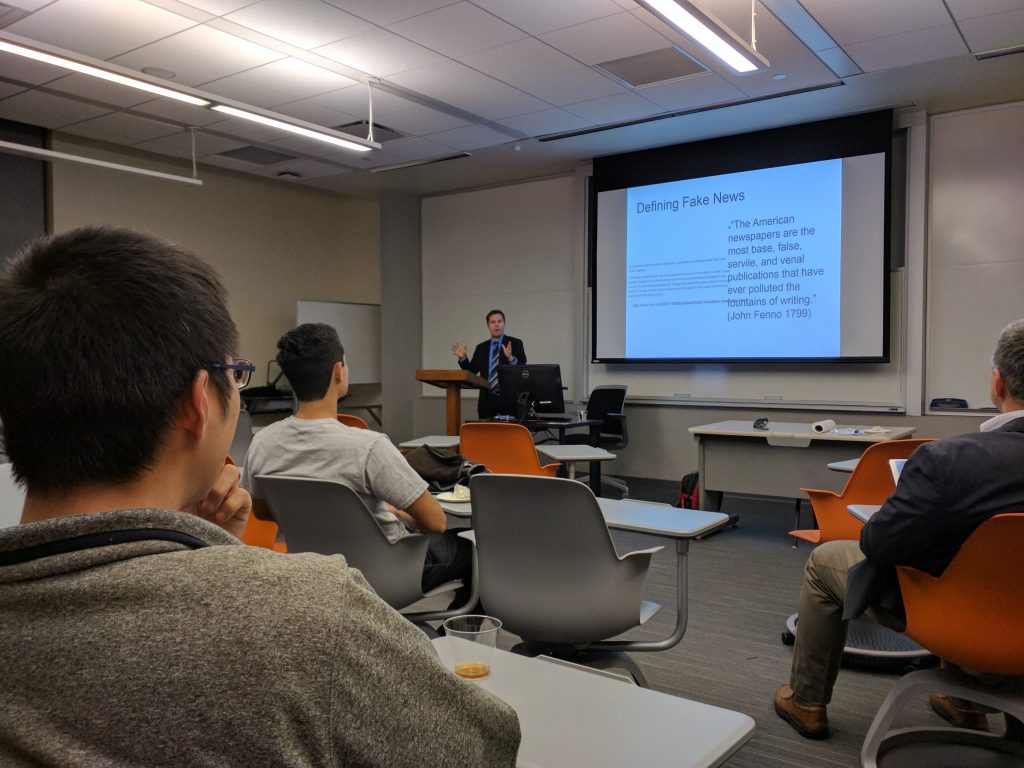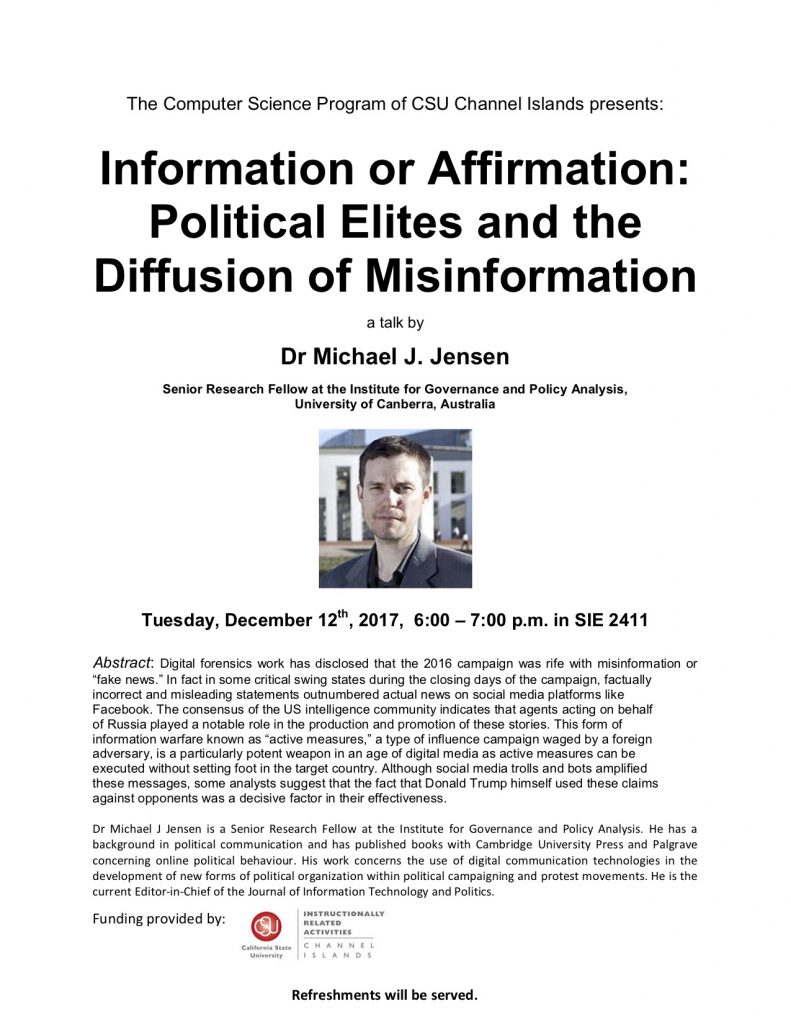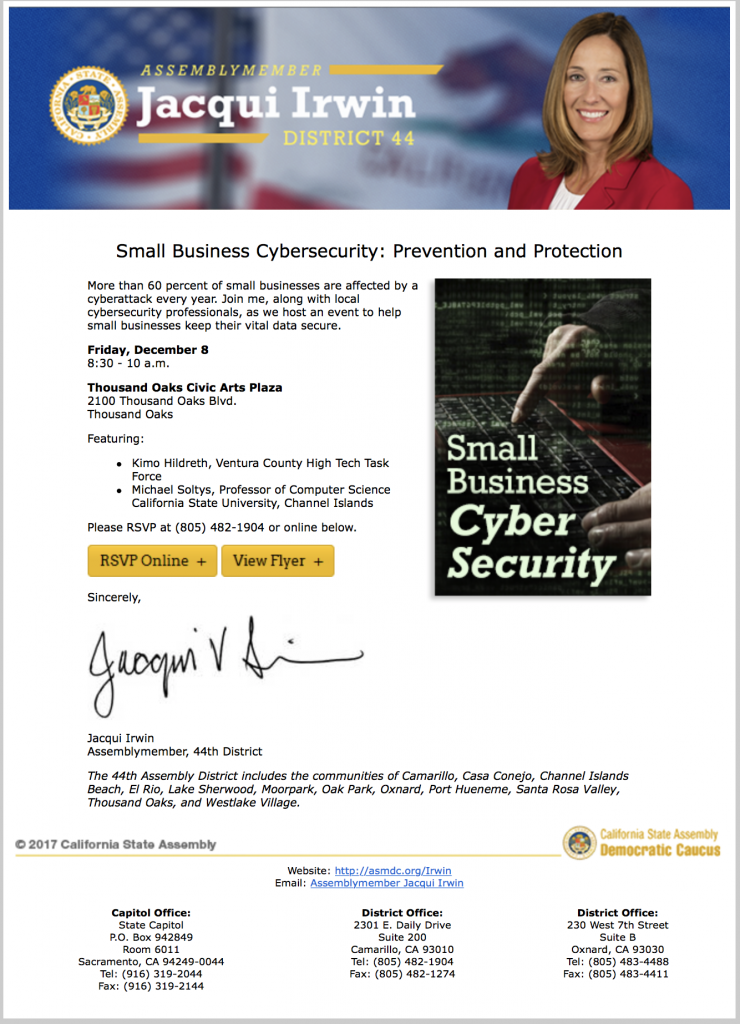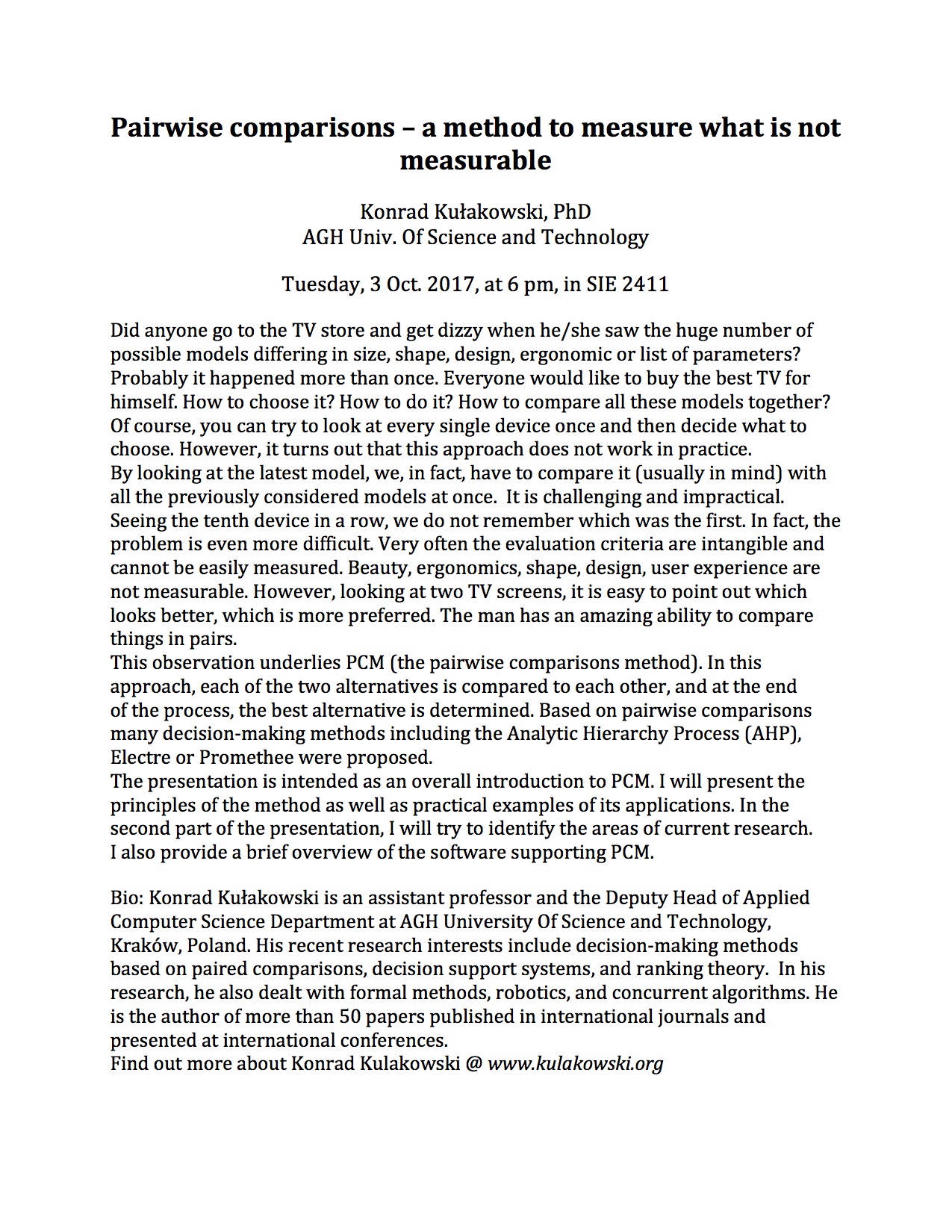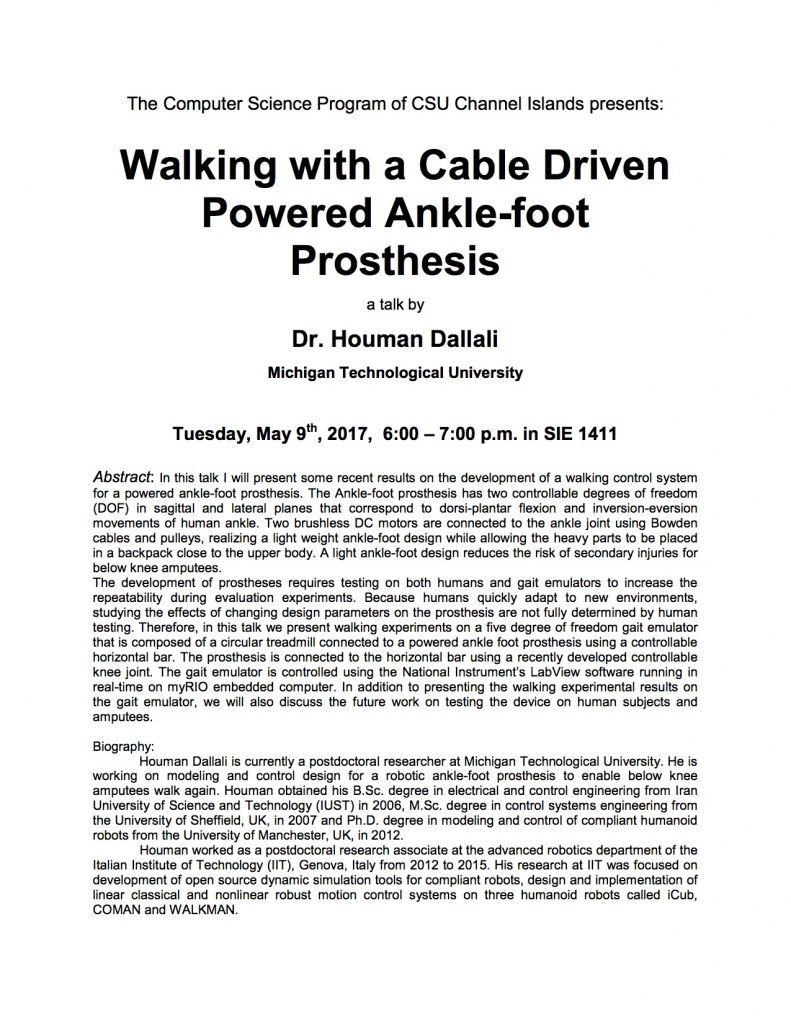Category: Seminars & Talks
Comp Sci @CSUCI seminar on algorithms by Marina Lepikhina @TheTradeDesk
Every day, media is becoming more fragmented as old models are reinvented digitally. This new landscape makes it harder for advertisers to reach their audience and requires an unbiased partner with powerful technology to help media buyers coordinate campaigns across digital channels.
With The Trade Desk, buyers can value each impression like traders value stocks, using first and third party data to decide which impression to buy and how much to pay. Customers can also use our APIs to build their own proprietary analytic insights or access our bidders to create specialty DSP offerings.
Cybersecurity event @CSUCI on April 20, 2018
On the evening of April 20, 2018 Assemblymember Jacqui Irwin and CSU Channel Islands president Erica D. Beck co-hosted a Cybersecurity event in Sierra Hall, promoting regional industry partnerships. At this event we had the opportunity to showcase our work – three masters students and one senior student presented research under my supervision:
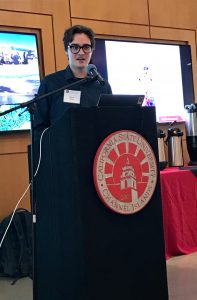 Zane Gittins spoke about his network penetration testing at HAAS: this work started as a Hank Lacayo Internship at HAAS in the fall of 2017, but since then Zane has been hired by HAAS to continue his work.
Zane Gittins spoke about his network penetration testing at HAAS: this work started as a Hank Lacayo Internship at HAAS in the fall of 2017, but since then Zane has been hired by HAAS to continue his work.
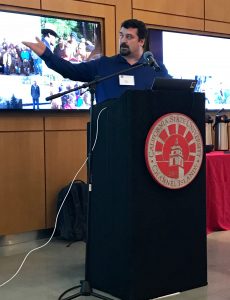 Eric Gentry spoke about the SEAKER project, a digital forensic tool that was developed with and for the High Technology Task Force (HTTF) at the Ventura forensic lab. We presented this tool at an event on August 7, 2017.
Eric Gentry spoke about the SEAKER project, a digital forensic tool that was developed with and for the High Technology Task Force (HTTF) at the Ventura forensic lab. We presented this tool at an event on August 7, 2017.
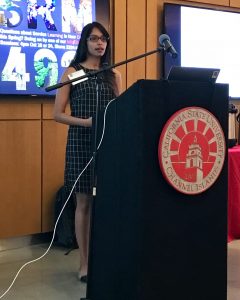 Geetanjali Agarwal spoke about the Image Recognition project, also inspired by the work done at the HTTF at the Ventura lab, where we aim to identify images from partially recovered files and compare them to a bank of images using the difference hash technique.
Geetanjali Agarwal spoke about the Image Recognition project, also inspired by the work done at the HTTF at the Ventura lab, where we aim to identify images from partially recovered files and compare them to a bank of images using the difference hash technique.
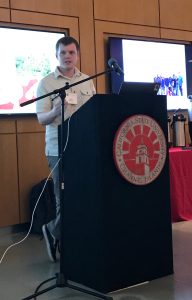 Ryan McIntyre presented his work on algorithms in bio-informatics. These results have been published recently in the Journal of Discrete Algorithms, and described in a blog post on March 6, 2018.
Ryan McIntyre presented his work on algorithms in bio-informatics. These results have been published recently in the Journal of Discrete Algorithms, and described in a blog post on March 6, 2018.
Here are the presentation slides.
I introduced the students making some remarks elaborating on president Beck’s statement about partnerships between CI and the Ventura industry. As a CI faculty, I find interdependence in the triad of Scholarship, Teaching and Industry relations. Many of our projects start by addressing a Research & Development need of the community, such as the SEAKER tool for HTTF. We use it to teach our students a hands-on approach to problem solving in Computer Science; we aim to produce quality work that advances knowledge and is publishable.
Scholarship, the first component of the triad, is really composed of three simultaneous activities: the research itself, which is laborious, time consuming, consisting of literature review and the cycle of hypothesis, testing and proving.
The funding component: labs, equipment, salaries, conferences, all these require funds, which can be secured through grants, philanthropic gifts or state support.
And finally dissemination, which is crucial as without it no one is aware of our work, and which takes place through publishing, conference presentations, blog writing, and events such as the one described in this blog. At CI we are lucky in that Advancement facilitates both fundraising and dissemination.
Thanks to Assemblymember Jaqui Irwin @JacquiIrwin, as well as Professor Michael Soltys @MichaelMSoltys and his Computer Science students for their efforts in addressing Cybersecurity #csuci #camarillo #computerscience #cybersecurity pic.twitter.com/Rhrz85klfj
— Erika D. Beck (@CIPresBeck) April 21, 2018
Great Comp Sci talk by Adrian Domanico from Facebook
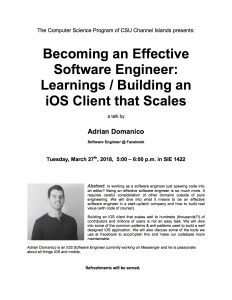 On March 27, 2018, we had a great talk in Computer Science by Adrian Domanico, from Facebook, on being a Software Engineering in the industry, both at small startups and at large companies such as Facebook.
On March 27, 2018, we had a great talk in Computer Science by Adrian Domanico, from Facebook, on being a Software Engineering in the industry, both at small startups and at large companies such as Facebook.
From the abstract of the talk: Is working as a software engineer just spewing code into an editor? Being an effective software engineer is so much more. It requires careful consideration of other domains outside of pure engineering. We will dive into what it means to be an effective software engineer in a start-up/tech company and how to build real value (with code of course!).
Building an iOS client that scales well to hundreds (thousands?!) of contributors and millions of users is not an easy task. We will dive into some of the common patterns & anti-patterns used to build a well designed iOS application. We will also discuss some of the tools we use at Facebook to accomplish this and make our codebase more maintainable.
Adrian Domanico is an iOS Software Engineer currently working on Messenger and he is passionate about all things iOS and mobile.
National Engineers Week Banquet @CSUCI
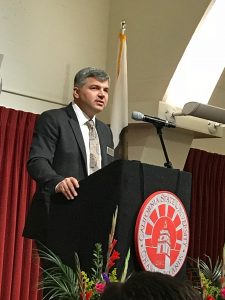 It was a great pleasure to Emcee the National Engineers Week of Ventura and Santa Barbara Counties banquet at CSU Channel Islands (CI). This was the 45th annual engineering week dinner, and the second year (in a row) that it took place at CI.
It was a great pleasure to Emcee the National Engineers Week of Ventura and Santa Barbara Counties banquet at CSU Channel Islands (CI). This was the 45th annual engineering week dinner, and the second year (in a row) that it took place at CI.
Thank you to my colleagues Jason Isaacs and Houman Dallali, and their students Adan Sanchez, Alexandra Collette and Nicole Dubin for a display of the student engineering projects at CI. We were delighted to announce that we are welcoming the first cohort of Mechatronics students in the fall of this year (2018). It was especially appropriate to welcome engineers from the local businesses and the local Navy bases at CI, as we pursue three interdependent missions:
- Scholarship
- Teaching
- Engagement in the community
The pièce de résistance event of the evening was a keynote address by Dr. Adam Steltzner, NASA Engineer with Jet Propulsion Laboratory. Dr. Steltzer is a renowned engineer who led the team responsible for the Curiosity Rover’s successful landing on Mars (the EDL: Entry, Descent, Landing system); the famous 7 Minutes of Terror. Last year Dr. Steltzer was named to the National Academy of Engineering.
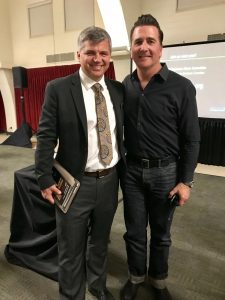 It was a great honor to meet Dr. Steltzer and listen to a first hand account of the mission.
It was a great honor to meet Dr. Steltzer and listen to a first hand account of the mission.
Why is it called the 7 Minutes of Terror? In just seven minutes, NASA’s six-wheeled rover called Curiosity, must go from 13,000 mph as it enters the Martian atmosphere to a dead stop on the surface.
During those seven minutes, the rover is on its own. Earth is too far away for radio signals to make it to Mars in time for ground controllers to do anything. Everything in the EDL system must work perfectly, or Curiosity will not so much land as go splat. The team that invented the EDL system, led by Dr. Steltzer, has spent nearly 10 years perfecting it.
Thanks @lex_collette and @nrdubin for showing off our @Swarmathon work at the National Engineers Week dinner @csuci. pic.twitter.com/89h4CWb7E5
— CI.Computer.Science (@csuci_cs) February 24, 2018
Congratulations to @csuci student @sirocknick for winning a National Engineers Week scholarship last night.
— CI.Computer.Science (@csuci_cs) February 24, 2018
Speaking at the Camarillo Chamber of Commerce
President Erika D. Beck speaking at the The Camarillo Chamber of Commerce CI Connection Luncheon pic.twitter.com/U71BPZMvH0
— CSU Channel Islands (@csuci) February 15, 2018
my remarks
Last night Comp Sci @CSUCI seminar by Prof Michael Jensen on how fake news spread on social platforms
I will be giving a talk on Cybersecurity for small businesses on December 8
Detective Kimo Hildreth and I will be giving a talk at a breakfast event on Cybersecurity for Small Businesses on Friday December 8, 2017, at 8:30am. To RSVP and view more event details click here. The event is organized by Assemblymember Jacqui Irwin, and it will take place at 2100 Thousand Oaks Blvd, in the “Oak and Park Room”.
msoltys-talk-dec8-2017